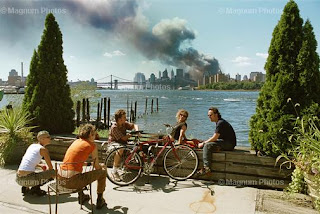Timothey Allen is a well known and renound photographer who is known mostly for his amazing time lapse videos that he created when touring the world with the BBC’s Human Plant Crew.
T. Allen was born in Tonbridge in the South East of England in 1971. At age 22, after graduating from Leeds University with a BSc Zoology he left the UK and spent 3 years traveling around Indonesia which was the catalyst that sparked his passion for photography.
In the early 1990’s, after beginning a part-time diploma in photography, Timothy joined an aid convoy to Bosnia in order to shoot his first year reportage project. Six months later he had dropped out of college and moved to London to begin work for the Sunday Telegraph. This new founeded career that he under took later inspired commissions from all the British broadsheet publications, more commonly known as the BBC. His final stage of his career upto date is a 6 year position at The Independent working predominantly on features and portraits. Timothy joined Axiom Photographic Agency in 2002 leading him to cover a dynamic and broad spectrum of global stories with subjects ranging from the civil war in the remote Spice Islands of far eastern Indonesia, to the intriguing subculture of The World Taxidermy Championships in Springfield , Illinois.
In recent years, the focus of his work has turned to our planet’s remaining indigenous societies and he currently devotes his time to documenting the diversity of humanity’s cultural heritage. His multi award winning documentaries have taken him to every corner of the globe, from 19 000 ft up in the Himalayas to 40 metres beneath the South China Sea as well as projects within communities in the Arctic, tropical rainforest and remote desert locations.
The image in the below is an images that Allen has captured in Indonesia.
One of his most famous pieces of work can be view from the URL link
The link plays a video that shows the 4 year time lapse that he created using both a locational landscape and a studio. To create this timescape he created a specially designed rig and studio area for this. For the studio part of the project he had to paint everything blue and place flowers in areas of the locational site that were plain, he did this by blowing a picture up and projecting it onto a wall.
The studio that required the most viewing was the camera itself as if the set or the camera moved more than 2mm the hole lot of the project up to any point would be ruined and him and his team would have to start all over again.
My personal opinion on this video is that it is the most inspirational time lapse video that I have ever watch. This is due to the way him and his team had had o spend a year researching and developing idea’s just in able to make sure that the project that want and are under taking can be a success. I also find the time lapse inspirational due to the way the team had to make there own rigs and devices in able for there project to be a success. Further more looking into this video I am now going to take inspiration and develop my own rig for my Final major projects theme of Time Lapses and Time Scapes.













